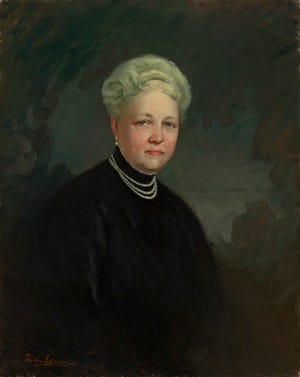

Budig. Corbett. Rosenthal. Taft.
The names of Cincinnati area benefactors easily roll off our tongues – and find themselves in bronze letters on buildings, auditoriums, theaters and universities.
But there’s another name that should be on the Mount Rushmore of local philanthropists.
Let me make the case for Mary Emery.
Perhaps it’s because she died in 1927, or because she was a woman, or because she didn’t seek the spotlight, but Emery’s contributions to the area are as impressive in their significance as they are in their diversity.
Making the case for Mary Emery
In the late 19th century, Mary Emery turned family tragedy and the conspicuous consumption of the Gilded Age into a legacy Cincinnatians are lucky to enjoy to this day.
But the crazy thing is: We’ve enjoyed her art, we’ve traveled streets she created, she’s even saved us money – and we may have no idea.
Emery was a New York native, but she made her mark in Cincinnati. You don’t have to go far before you see her name on museums, colleges and even a village here.
Her husband, Thomas, died in 1906, and she had already lost both her sons. She inherited millions, and set her sights on using them to improve her community through philanthropy, and doing so in her family’s name.
She started at the Cincinnati Art Museum.

Emery was already a budding art collector when she funded free Saturday admission to the CAM in 1906 that continues to this day. (Admission to the CAM is free every day now, thanks to a 2003 donation from the Rosenthal Family Foundation.) And that’s just the beginning of her impact at the museum.
“Her art gifts and 1927 bequest of European Old Master paintings is considered by many to be the most important gift ever made to the Museum,” said Jill Dunne, director of marketing and communications at the Cincinnati Art Museum. That donation, valued at $3.5 million at the time, included masterpieces by Van Dyck, Mantegna, Murillo, Gainsborough, Hals and Titian. The Emery Wing, where many of those pieces are now displayed, opened at the museum in 1930.
Contributions from 'Lady Bountiful' around the city
There must have been a love for animals as well. She and her friend, fellow benefactor Anna Sinton Taft, heard the Cincinnati Zoo was in dire financial straits in 1916. So they bought it. And they ran it until their deaths, when the city of Cincinnati took over. Now, it’s the second oldest zoo in the country.
You’ll find Emery’s name on a building at the University of Cincinnati’s famed College-Conservatory of Music. I taught media ethics inside that building for several years and had no idea the impact its namesake truly has.
She’s the Mary for whom the Village of Mariemont is named. In fact, Mariemont was a planned community – planned and funded by Emery, in part, to allow people of all income levels to afford appropriate housing.
She endowed a building for the Ohio Mechanics Institute, which included a world-class auditorium – surely an interesting choice for a place that taught machine tooling. But the Emery Theatre was so universally lauded for its “perfect acoustics” that the Cincinnati Symphony Orchestra played there from 1912-1936.
Over her years of service to Cincinnati, she donated the land where Cincinnati Children’s Hospital Medical Center is today, created orphanages for Black children and gave enough money to build two parish halls for Christ Church downtown.
Her biography, by former CAM director Millard F. Rogers Jr., is called “Rich in Good Works.” The title is from I Timothy 6:18, “Instruct them to do good, to be rich in good works, and to be generous and ready to share.”
Cincinnati’s “Lady Bountiful” no doubt committed that verse to heart. And we are all the better for it.
Source link







